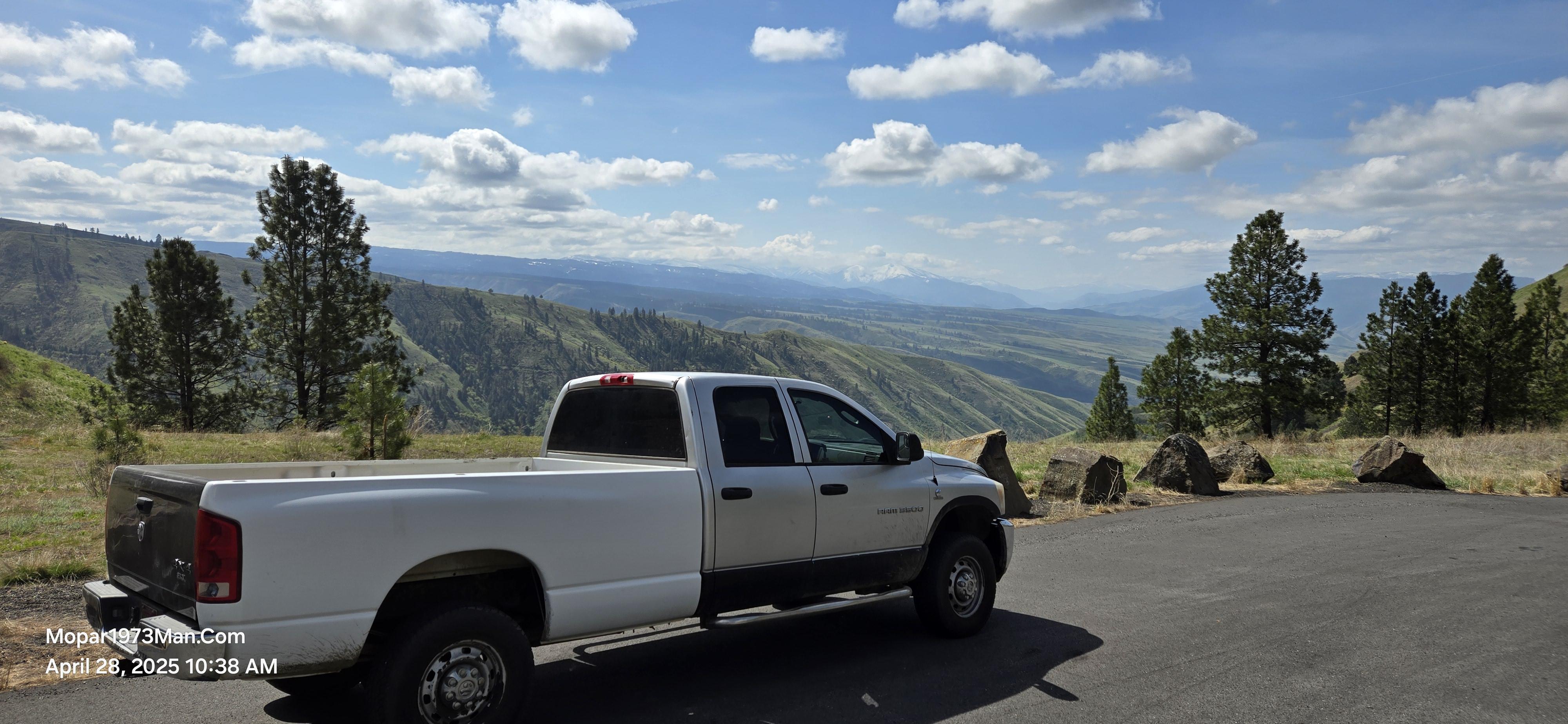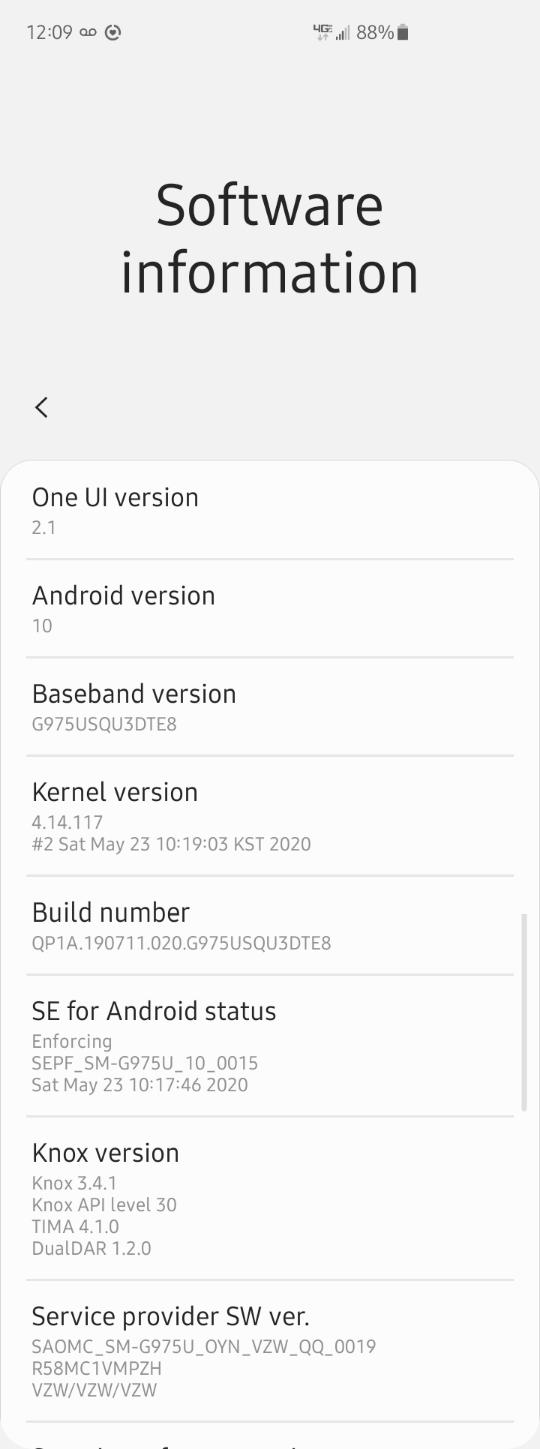
Everything posted by Mopar1973Man
-
Quadzilla stumbles @ max TPS WT %
Set max TPS to 100% you trying to cram the entire wiretap fuel table is a small span hence why it shudders. Set the min to 0% and set the max at 100%. Now wiretap works over the whole span of throttle.
-
New front end noise, how can I diagnose the front end?
Jack the axles and attempt to rock the tire up and down then left to right check for bad bearings. Even spin the tire feel for rough gritty bearings.
-
Sound like a boost leak ?
No. No effect on my truck. No change in smoke per se but spools right up and listen to the loud blowing whistle. Ive had a bolt blow out of my intake manifold. Even towing it rose a little on EGTs but continued towing my RV home 40 miles. This how I know boist leaks don't effect as deep as most claim. Oh the bolt was still on the manifold when I got home.
-
Revs up and down.
ok thats a clue.. Pull the alternator and have it tested for AC ripple and make sure to test the new replacement before leaving the store. Now you need to the W-T ground mod.
-
Random message about iQuad
Since my Samsung S10+ has updated last im seeing messages about iQuad slowing down WiFi Connection. Bring this to light for @Quadzilla Power so it maybe looked at and possibly corrected.
-
Best low rpm towing turbo
HX35W would work short on the top end. DAP for 62/68/12 would be the common for 150 HP setup. Then I would like to know how much timing you running?
-
Economy Car Or Diesel Truck to go shopping...
This time I took the Cummins and ice chest.
-
Revs up and down.
Error codes? Fuel pressure?
-
Add quadzilla app to Android head unit
Double check the version of Android OS first. Lot of head units are not up to date and don't work well on older versions of Android. Should be an app for installing other apps. Google play typically. Just install the iQuad app.
-
Squealing brake help needed
Did you check wheel bearings? Sometimes when the unit bearing fails it makes noise rolling then apply the brakes that centers the rotor and it may go away for that time the brakes are applied. Myself I use economy brake pads (NAPA) and getting 200k per set. Little brake dust. Minor wear on the rotors at 350k. Clock is at 415k.
-
Rock Slide Highway 95 closed north of Pollock, Idaho
Sorry @JAG1 was a local trying to get home. Now I'm basically unemployed till I can get to Riggins for most of my jobs. Currently trying to enjoy 4th of July party in about an hour. (Nampa, ID)
-
New member!
Thanks @JAG1... Great guys too. Yup we can help you build Quadzilla tunes. Im getting pretty good at building tunes.
-
Best low rpm towing turbo
Yes, but moves the power band up towards 1,500 to 2,000 rpm where it builds good boost, without EGT issues. Choke point on your 6cm2 turbo won't let you build boost to much before the drive pressure is over whelming the turbine.
-
Would you buy LED bulb kits for your truck?
I've had a night to sleep on this a bit I'm going to revert to doing it by bulb type and reference number that make and model of truck and position. Lot of the bulbs are reused in several places in the truck just color of bulb might have to change like rear high mount stop lamp is red where the same bulb is used for interior map light in white. I'm also looking at it from order position so I can keep inventory supplied and watched over.
-
Economy Car Or Diesel Truck to go shopping...
Myself included I'm 6'2" tall as well. Eileen's little Hyundai is nothing to laugh at. That little car is pretty darn quick when you drop it in SPORT mode and the steering get feather light, transmission shift pattern changes, and even the fuel parameters change making it even quicker. My problem is I'm long legged and the seat is just a few inches from the floor so I typically sit rather unnatural with my left leg pull up to the seat and my right leg resting on the center console. Cummins on the other hand, never worry about getting things home there is a full 8 foot bed to toss everything into. Then there is a full back seat for my stuff. I sit more naturally in the Cummins. I might not get the 40 MPG like the little Hyundai but sure gets the job done quickly. It can haul a trailer loaded even now when you play the MPG per ton game now the Hyundai loses the game, but the Cummins comes out on top again. Yeah that spooling turbine is a wonderful sound.
-
Best low rpm towing turbo
Typically the 24V guys typically aim for 62/68/12 turbo and run 150 HP injectors (7 x 0.010) as a good combo. Even a stock HX35W turbo is 54/60/12. Then what I'm running is HX35/40 hybrid turbo which is like the HE351 but larger exhaust housing (60/60/12) where typically the HE351 is a (60/60/9).
-
Rock Slide Highway 95 closed north of Pollock, Idaho
No one was hurt. But I'm now cut off from Riggins, ID. Maybe a week to clean up according to the rumor.
-
Would you buy LED bulb kits for your truck?
I'm working on building the store with common LED bulbs. I'm going to work at both 2nd gens and 3rd gen for now and get it populated with product. https://mopar1973man.com/store/
-
Lift size question
Do you mean 3.57:1 ratio final? 3.69:1 final like myself I'm at 66 MPH is perfect 2,000 RPM and at 80 MPH is 2,450 RPM's I've documented several runs at 82 MPH still getting 21 MPG. Remember for every 1 pound of rotational weight you drop is like dropping 8 pounds off the frame. Consider the weight of the wheels and tires too.
-
Lift size question
Optimal final ratio should be 3.55 to 3.73. Example stock mine came with 265/75 R16 tires and 3.55 gears (31.6 inches). Now drop to a 245/75 R16 tire (30.5 inches) not changes the final ratio to 3.69:1 which I'm currently running. When figuring it out you need to start from the stock design typically 265/75 R16 tires.
-
5 psi oil pressure drop?
Possible maybe but never heard of it. I will say that you most likely going to have to pick up the gasket for the oil cooler from a Cummins dealer. I've had zero luck finding that gasket in normal part stores. Then you could remove the oil filter base and check the valve port. Bit safer working off the truck than dropping possible debris into the oil galley.
-
2-stroke oil on sale!
I tend to sway away from synthetic 2 cycle oil typically because the price per gallon but for that amount for a gallon isn't bad.
-
Would you buy LED bulb kits for your truck?
Give me a bit of time I'll get my access as a dealer and be able to quote prices.
-
Can too Much Load and Timing Cause Any Damage?
Not the only time even I been busted for making stupid moves.
-
Synthetic vs standard automatic transmission fluid
Synthetic alone is not slick enough. So friction modifer is added to allow clutches ans band some ability to slip without chatter. Again ask @Dynamic about this, this is how it was explain to me.






